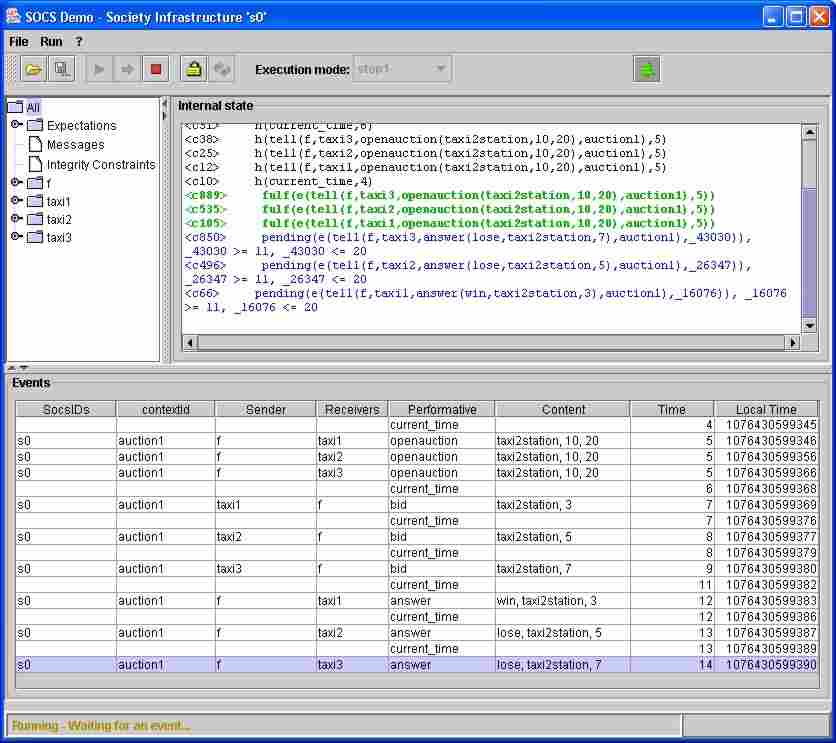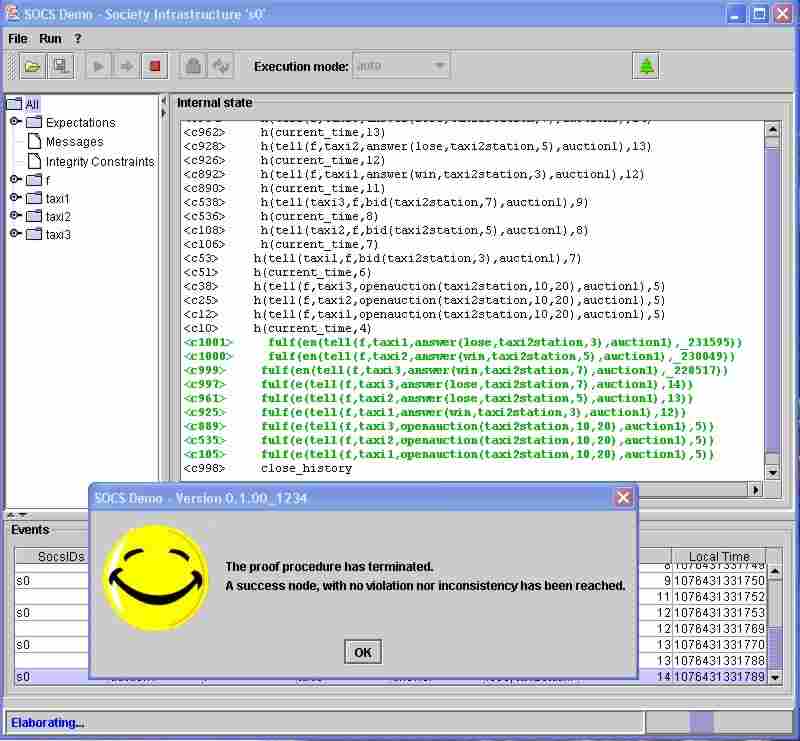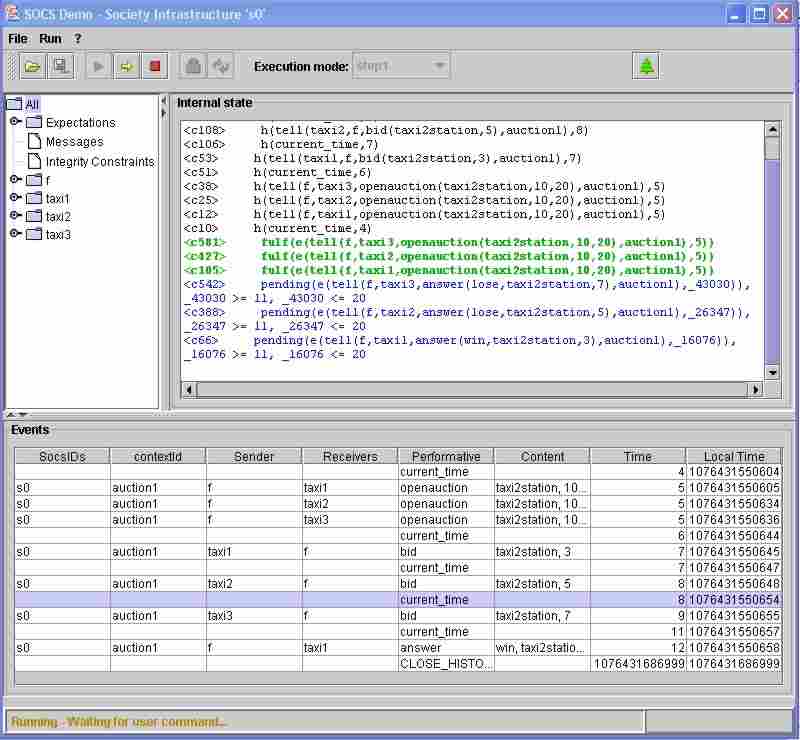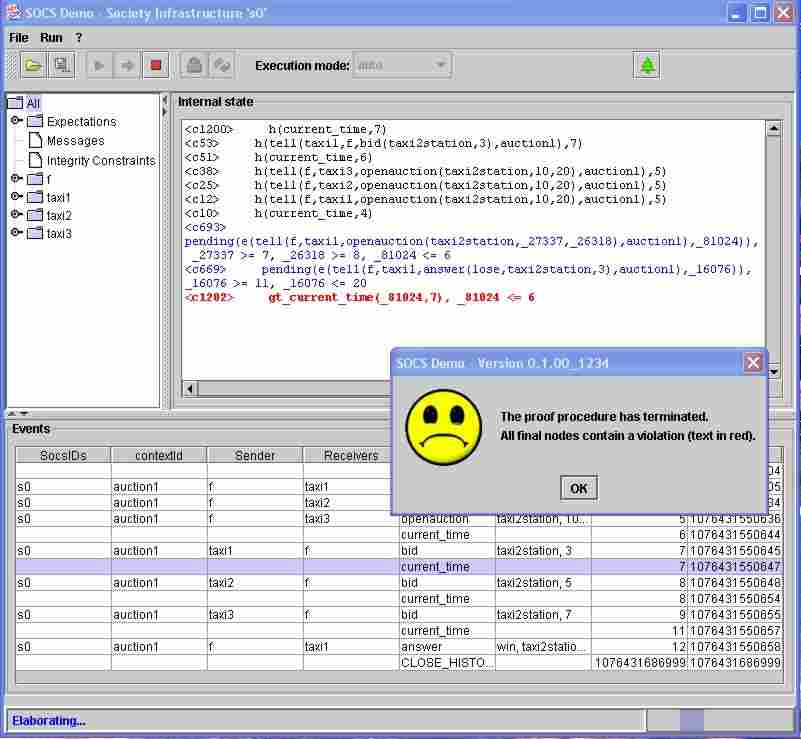We are going to present two different scenarios: in the first scenario the protocol is satisfied, and the SOCS-SI tool communicates the successful verification of the interaction (screenshots 1-4). In the second scenario, instead, the auctioneer forgets to notify some bidders that they have lost. When the auction terminates, the SOCS-SI detects this violation of the protocol (screenshots 5-6).
Here we present the auction protocol in terms of the Social Integrity Constraints that should be satisfied in order for the protocol to be fulfilled
IC1:
H(tell(B,A,bid(Item,Quote),AuctionId),TBid)
--->
E(tell(A,B,openauction(Item,TEnd,TDeadline),AuctionId),TOpen)
/\ TOpen < TBid
/\ TBid <= TEnd
/\ TEnd < TDeadline.





